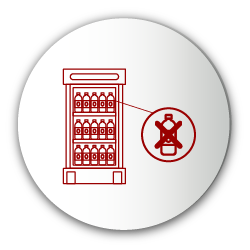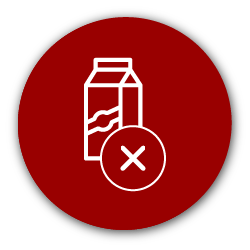The private label brands you present in your store can have a significant impact on your long-term success. That’s one reason why it’s worth introducing them to your store. Another reason is that you can provide your customers with more shopping options. When shoppers realise you offer a wide variety of products, they’ll come to understand that you’re looking out for their needs.
That said, mistakes happen. However, you shouldn’t be concerned because you’re not the first or the last to have done so. Making a mistake is only one part of the battle. The more significant part is to find a way to correct the mistakes before they cause any long-lasting damage.

Mistake: You price your private label products incorrectly
As we have mentioned in a few pieces on this blog, pricing plays a significant factor in how your customers perceive your stores. Choose the wrong price, and you could even break your retail business.
Unfortunately, that doesn’t mean this mistake don’t happen. There are plenty of stories of retailers overpricing their products (believing customer demand is higher than it is) and suffered as a consequence.
Fortunately, when it comes to pricing your private label products, there is a lot you can do to ensure you don’t make a mistake.
For one, you need to consider the costs. How much does it cost you to produce your private label? That’s because understanding your costs will ensure you don’t end up overpricing your products against national brands and brand leaders.
Let’s say, for example, that it costs you $5 to produce a product. The brand leader sells at $10 while national brands sit at $12. To keep in-line with industry standard, you wouldn’t attempt to sell your item at $20. It would be a better idea to have the price closer to $10. It doesn’t have to be $10 exactly, but it does need to be reasonable.
Secondly, you need to consider your customers. Who are they? What do they want from your products? Moreover, What drives their buying decisions? Knowing the answers to these questions will help you to decide on a price that suits you and your consumers.
For example, if your customers perceive your store as an everyday brand, they’d expect your prices to reflect that. It’s the same for premium retailers. Shoppers would expect to pay more. That said, in the long-run and if you want to please customers, the actual quality is more important than perceived quality.
Thirdly, it’s vital to consider your positioning. Here, we’re not referring to on-shelf location but rather your positioning in the market. Do you want customers to view your private label as an expensive, luxurious or high-end brand? Would you prefer to come across as a cheaper product or somewhere in-between?
Lastly, you must consider your goals. In other words, how much profit to you want to make? It’s always a good idea to look at your competitors as well as similar products within a category and price accordingly. However, you do need to balance that thinking with a profit figure that you’re happy with and that makes it worth your while to stock a private label.

Mistake: You fail to highlight or promote its features
When you first introduce a private label, your customers won’t know much about it. That much should be obvious. What’s more, you can’t expect them to begin buying the product just because it’s on the shelf.
Imagine introducing a private label milk product into your store, and apart from the label you place on it, there is nothing else distinguishing it from the rest of the products in the category. Since you’ve told your customers nothing about the product, why should they buy it?
What’s more, failure to highlight its features or show these products are on the same level if not better than the brand leader can leave shoppers perceiving it as inferior. As for the consequences, there are many. A few include reduced sales and profit, dead stock, expired products, cash tied up in stocks, and a loss of business to your direct competitors.
The last thing you’d want or expect is to introduce a product and then watch as it fails because customers don’t want to buy it.
Fortunately, there are a few approaches you can take to correct this mistake, the most obvious of which is to raise brand awareness in-store. You can do that by placing banners or shelf talkers besides the shelf stocking the product.
These banners can highlight the price and educate your customers about the difference between your product and another they know and buy regularly. More importantly, you can use them to persuade shoppers why they should switch out their regular choice for your house brand.
It’s also worth running introductory promotions or launch specials and let your customers interact with the product. In this instance, wet sampling is an excellent method to use to generate awareness and combat any negative perception around your house brand.
 Mistake: You position these products incorrectly on the shelf
Mistake: You position these products incorrectly on the shelf
The shelf position of your private label plays a significant role in its long-term success. Similar to any pricing errors, if you place your house brand in the wrong spot, you’re harming its chances of success.
So where should you place it on the shelf?
The ideal place is to position it next to your national brands and market leaders at eye level. That is to make it easier for shoppers to compare the brand leader against your house brand. It’s also to show your customers that they have options. They don’t only have one choice.
That said, it isn’t always possible to position it at eye level, and especially not if you have chosen to stock multiple private labels across different sub-categories in a single drop. In that case, you have two options.
You could either brand block the items together. If you do, it’s best to either brand block everything else for continuity across the drop. Alternatively, you could separate the products across the drop into their sub-categories and keep each beside their relevant competitors.
Whichever route you decide, the goal is to ensure the consumer is aware of your product and if they don’t want to buy the brand leader, yours is available for them to buy. It helps if you’ve placed a banner or some form of advertising noting this fact.
Of course, you do need to be mindful of cluttering your shelves with signage and advertising. You might have multiple house brands in a single drop, but you can’t highlight them all for fear of overwhelming shoppers.
There is also the point that merchandising private labels besides the national brand will help you to generate a positive perception of your brand. If shoppers see the brand leader on the shelf - which they regard as of high quality - and besides it your house brand, there is every opportunity that they’ll view it in the same light.

Mistake: You haven’t considered the packaging of your private labels
As much as you might not want to judge something by its outside appearance, that doesn’t mean it doesn’t happen. You’ll quite easily choose one item over another because it appeals to you.
It’s the same with the packaging of your private labels. If you don’t pay attention to how you present them, ensuring it matches the expectations of your customers, you place yourself at a disadvantage.
As we mentioned above, you can’t just put a label on your product and expect customers to buy it. You need to motivate them and give them a reason as to why they should choose your product.
What’s more, you risk losing customers to your competition who have correctly labelled and packaged their products to appeal to them. Moreover, it can cost your business much money to rectify any mistakes around your packaging. That’s money that you could have invested elsewhere into your business.
So how should you package your private label brands?
The first approach is to think everything through before you begin. What message do you want to spread to your consumer? Do you want shoppers to know the private label is yours or do you want to cut direct ties with it? Which route you choose does depend on your target market.
For example, in choosing your packaging, you shouldn’t attempt to appeal to everyone because then you run the risk of alienating everyone. Instead, it’s better to think about your ideal customer and package the product accordingly.
Another option is to compare your intended packaging with those of the brand leader and attempt to fall in line. Of course, you shouldn’t simply copy the design. Instead consider creating packaging that is of the same standard so that if shoppers look at both items, they won’t feel like they are buying an inferior product.
It’s also worth researching your market to see if you can find any trends and understand what your customers like or dislike. Do they prefer practical or eco-friendly packaging? As soon as you notice any patterns, it’s crucial for you to incorporate these patterns so you can appeal to your target market.

Mistake: You don't analyse your retail data to determine opportunities
There is no doubt about this fact: your retail data is powerful. By analysing it, you can spot opportunities and know exactly where you’re not performing. If you’re underperforming, you can put measures in place to correct it as soon as possible.
Of course, that is if you analyse your data correctly. Because you can, quite easily, miscalculate. Using the wrong measures and looking at the data through the wrong lens can do that.
And, in doing so, you’re not only wasting your time; you’re working against yourself. Since private labels usually attract a higher margin, you’re losing out on profit. There is also the fact that it can lead to redundant stock and the wrong assortment mix, which can have long-lasting effects on your business.
By analysing your retail data correctly, you have every chance of spotting opportunities. For example, you’ll know what variants of other brands sell in your store. Using this information, you can determine whether or not there is a market for private labels.
It’s also worth making use of planograms to ensure you analyse your data accurately. Here, you can evaluate your product contribution, the growth within a category and opportunities around ranging. Moreover, with planograms, you can forecast sales by increasing product forward share for those items with high stock turns. At the same time, you can cut down on slow movers.
Conclusion
DotActiv Lite, Pro, and Enterprise are all different versions of our category management software that allows you to drive category performance. You can visit our online store here.


